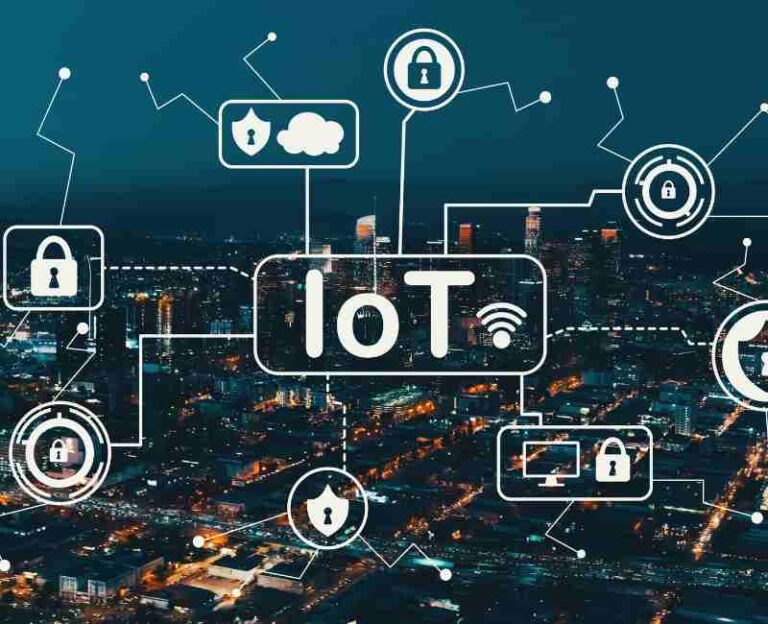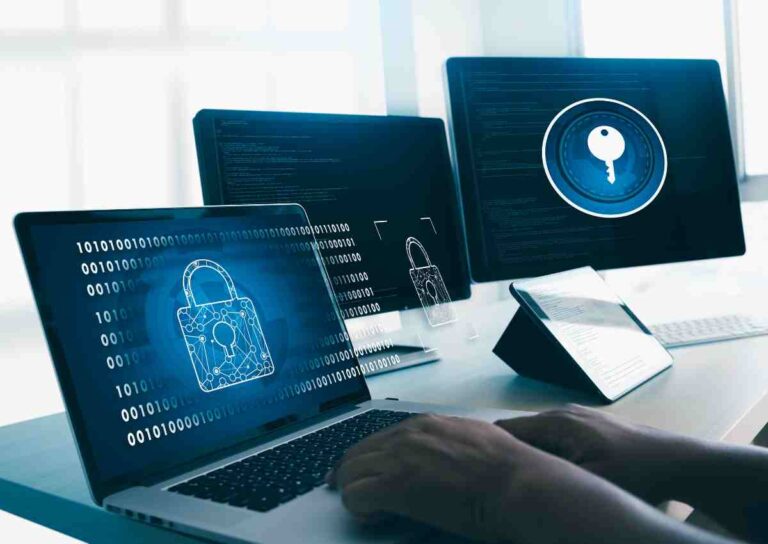In today’s digitally driven educational landscape, the importance of cybersecurity for online learning platforms in ensuring student privacy cannot be overstated.
With the advent of technology, online learning platforms have become increasingly integral to the educational experience. From K–12 to higher education institutions, students and educators alike rely on these platforms for access to course materials, collaboration, and remote learning opportunities.
However, amidst this reliance on digital tools, the security of student data has emerged as a paramount concern. The primary focus of this discussion is on cybersecurity measures implemented to safeguard student data within online education environments.
Ensuring the privacy of student data is crucial not only for compliance with regulatory standards but also for maintaining trust and integrity within educational institutions. As such, the significance of protecting student data in the online education environment cannot be overstated.

Identifying Threats to Student Privacy
In the realm of online learning, cybersecurity risks lurk around every virtual corner, posing significant threats to student privacy and educational institutions’ integrity. Understanding these risks is paramount to implementing effective protective measures.
Cyberthreats targeting online learning platforms come in various forms, each capable of compromising student data and undermining the sanctity of educational environments. These threats include data breaches, phishing attacks, malware encounters, and unauthorized access to sensitive information.
Real-life examples serve as sobering reminders of the potential consequences of lax cybersecurity measures. Incidents of data breaches on prominent online education platforms have exposed millions of student records, leading to severe repercussions for both students and institutions.
Beyond the immediate implications of compromised student data, these incidents also raise concerns regarding privacy laws and regulatory compliance. Educational institutions must navigate a complex landscape of privacy laws such as FERPA and GDPR to ensure they meet their obligations regarding student privacy.
Essential Cybersecurity Practices for Educational Institutions
To fortify online learning environments against cyber threats and safeguard student data, educational institutions must adopt a proactive approach to cybersecurity. Implementing robust security measures is essential to mitigating risks and maintaining data security integrity.
Encryption stands as a cornerstone of cybersecurity, ensuring that sensitive information transmitted and stored within online learning platforms remains inaccessible to unauthorized parties. By encrypting student data both in transit and at rest, institutions add an extra layer of protection against potential breaches.
Secure authentication mechanisms play a pivotal role in preventing unauthorized access to student data. Implementing multi-factor authentication or two-factor authentication measures ensures that only authorized users can access sensitive information, thereby reducing the risk of cyber intrusions.
Regular security audits serve as proactive measures to assess the effectiveness of existing cybersecurity protocols and identify potential vulnerabilities. Through comprehensive assessments and evaluations, educational institutions can promptly address any weaknesses and bolster their data security defenses.
Case studies showcasing successful implementations of cybersecurity protocols in online learning environments offer valuable insights and practical examples for educational institutions. By examining real-world scenarios and outcomes, institutions can glean best practices and tailor their cybersecurity strategies to suit their specific needs and challenges.
Empowering Teachers and Staff
Educators and staff members play pivotal roles in upholding cybersecurity standards within educational institutions. By understanding their responsibilities and receiving adequate training, they contribute significantly to maintaining data security integrity and protecting student privacy.
A comprehensive approach to cybersecurity education involves providing teachers and staff with targeted training programs tailored to their roles and responsibilities. These programs should cover essential topics such as secure data handling, password management, and recognizing phishing attempts.
Fostering a culture of cybersecurity awareness within educational institutions is essential to ingraining best practices and promoting vigilance among faculty and staff. Regular communication channels, such as newsletters or seminars, can disseminate updates on emerging cyber threats and reinforce the importance of adhering to cybersecurity protocols.
Collaboration between cybersecurity experts and educational institutions facilitates the development of customized training materials and resources. By leveraging the expertise of professionals in the field, institutions can ensure that training programs are relevant, engaging, and effective in addressing the specific cybersecurity needs of teachers and staff.
Ensuring compliance and regulation
Educational institutions must navigate a complex web of privacy laws and regulations to ensure compliance and uphold student data privacy. Understanding the key requirements and implications of regulations such as GDPR, FERPA, and COPPA is essential for maintaining data security integrity and avoiding legal repercussions.
GDPR (General Data Protection Regulation) sets stringent standards for data protection and privacy for individuals within the European Union (EU) and the European Economic Area (EEA). Educational institutions that process personal data of EU/EEA residents must adhere to GDPR’s principles of lawfulness, fairness, and transparency in handling such data.
FERPA (Family Educational Rights and Privacy Act) safeguards the privacy of student education records and grants parents and eligible students certain rights regarding the access and disclosure of these records. Educational institutions receiving federal funding are required to comply with FERPA’s provisions to protect student privacy rights.
COPPA (Children’s Online Privacy Protection Act) imposes restrictions on the online collection of personal information from children under the age of 13. Educational institutions offering online services or platforms targeted at children must obtain parental consent and implement appropriate safeguards to comply with COPPA requirements.
Achieving compliance with privacy laws entails implementing robust data protection measures and adopting best practices in data handling and storage. This includes implementing privacy-enhancing technologies, conducting privacy impact assessments, and maintaining comprehensive data management policies.
FAQs
How can online learning platforms protect student privacy from cyber threats?
Online learning platforms can employ various security measures to safeguard student privacy from cyber threats. These include implementing robust encryption protocols to secure student data in transit and at rest, enforcing strict access controls to limit unauthorized access to sensitive information, and conducting regular security audits to identify and mitigate potential vulnerabilities. By adopting these proactive measures, online learning platforms can bolster their cybersecurity defenses and protect student privacy from external threats.
What are the legal implications of data breaches in online education?
Data breaches in online education can have severe legal and regulatory consequences for educational institutions. In addition to potential fines and penalties, institutions may face lawsuits from affected individuals and regulatory agencies for failing to adequately protect student data. Moreover, data breaches can damage an institution’s reputation and erode trust among students, parents, and other stakeholders. Therefore, it is essential for educational institutions to prioritize cybersecurity and implement robust data protection measures to mitigate the risk of data breaches and comply with applicable laws and regulations.
How can educators contribute to maintaining cybersecurity in online learning environments?
Educators play a crucial role in maintaining cybersecurity in online learning environments by fostering cybersecurity awareness among students and implementing best practices for secure online interactions. This includes educating students about cyber risks such as phishing and malware, teaching them how to create strong passwords, and recognizing suspicious online behavior. Additionally, educators can lead by example by practicing good cyber hygiene themselves, such as using secure communication tools and following privacy guidelines. By promoting a culture of cybersecurity awareness and vigilance, educators can help create safer online learning environments for all stakeholders.
Conclusion
In conclusion, the preservation of student privacy on online learning platforms hinges on robust cybersecurity measures implemented by educational institutions. Throughout this discussion, we have underscored the critical importance of safeguarding student data from cyber threats to maintain trust and integrity in online education environments.
As educational institutions continue to embrace digital technologies for teaching and learning, prioritizing cybersecurity becomes paramount. From implementing encryption and access controls to fostering cybersecurity awareness among faculty and staff, proactive measures must be taken to mitigate risks and protect student privacy.
It is imperative for educational institutions to heed the call to action and make cybersecurity a top priority. By allocating resources and investing in cybersecurity infrastructure, institutions can fortify their online learning platforms against cyber threats and uphold their commitment to student privacy.
Furthermore, the landscape of cyber threats is ever-evolving, requiring ongoing vigilance and adaptation. Educational institutions must remain vigilant and proactive in identifying and addressing emerging cyber threats to ensure the continued safety and security of online learning environments.
In conclusion, by prioritizing cybersecurity and staying vigilant, educational institutions can create safer and more secure online learning experiences for students, faculty, and staff alike. Together, we can safeguard student privacy and uphold the integrity of online education in the digital age.
More Post
- Cybersecurity for Online Learning Platforms: Ensuring Student Privacy
- How to Adaptive Learning Platforms: Tailoring Education to Individual Progress
- Social Learning Platforms: Creating Online Learning Communities
- How do implement 1:1 device programs in schools?
- Can We Unravel the Secrets of the Dark Web? Understanding Cybercrime Hideouts and Their Impact






